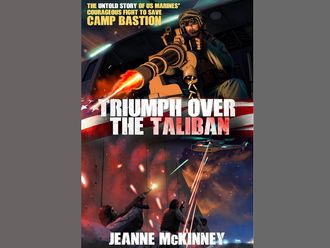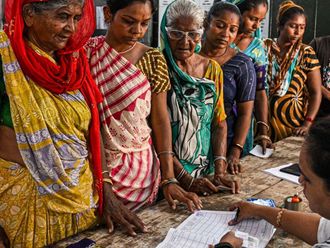
While everyone is overwhelmed with the Shakespearean tragedy of epic proportions that’s befalling the United Kingdom; the cacophony of voices, Remainers and Leavers, yelling into each other’s faces as our divisions are thrust to the forefront, mere powerless humans such as myself are on the ground considering stockpiling canned goods and bottled water for the inevitable coming onslaught.
Every day brings new delights for horrified onlookers and I was struck — almost quite literally — emotionally, by the comments from Northern Ireland’s First Minister Arlene Foster, who leads the Democratic Unionist Party, the outfit that has been against the government’s Brexit deal and its ‘backstop’ caveat, which the party says would create a border between Northern Ireland and the rest of Britain — something they are completely opposed to.
However, speaking on a televised news item, she claimed that there had never been a hard border in Northern Ireland.
After picking up my jaw from the floor, I and many others, took to social media to express outrage and disgust at the lack of knowledge of her own country.
Let me offer a short history of the border in Northern Ireland, which was formed initially in 1922 to split the island of Ireland into two — the Republic of Ireland and the UK — the six counties in the North.
Checkpoints
There have indeed been various checkpoints throughout the years along this imaginary line separating the two countries; etched with fences, barbed wire and numerous armoured enforcements. If this isn’t a border then I don’t know what is.
Following the Good Friday Agreement in 1998 there was an easing of said border patrols and there is now a beautiful free movement that renders the border invisible — which is just the way we, the people of Northern Ireland, like it.
Many people, in response to Foster, posted images of these border patrols and checkpoints that were a feature of Northern Irish life for decades. These photos were old and grainy and taken well before the smartphone era. I myself remember the checkpoints and the soldiers and RUC officers stopping cars and buses to conduct searches. Perhaps, for people living in a city near or on the border, this was more evident than for others. But the border existed.
However, this whole scenario got me thinking about this Trumpesque alteration of history by denial.
And it raises the importance of recording information and in a way that embodies truth and fact. Unlike today, these images would have been nigh-impossible to alter.
It’s difficult to know what is real or not with the advance of software that can even create video that is fabricated yet looks authentic. It’s terrifying really and is straight out of Orwell’s 1984. If we can’t believe in anything we read then what kind of utter chaos lies ahead?
And even more disturbing, it seems such fabricated material commands a huge following of believers who care not for seeking the truth themselves.
Foster has spluttered into Trumpish shenanigans, which attack facts like they are nothing but paper rather than the cold, hard stone they should be, and are.
Traps
There are no doubt people out there who listened to her and decided that what she was saying was true. It’s a sorry state of affairs when a person supposed to be representing the entire region is so short-sighted bordering on plain recklessness.
As a journalist, I understand writing and perspective and interpretation and all the nuances of meaning that underpin them.
But we must protect with our last breath the images and documentation that confirm our own history and combat the frivolous natures of those who will utter non-truths in the hope of swaying those who are likely to fall into their truth traps.
Trust is such a rare commodity these days, and it seems the only way to counter this is to keep all records safe and when needed to raise them up as the shining beacons that they represent, a light in a sea of darkness, a kernel, a seed, a chance of a new path and a chance for a better humanity.
Christina Curran is a freelance journalist based in Northern Ireland.





_resources1_16a31069e4e_small.jpg)






